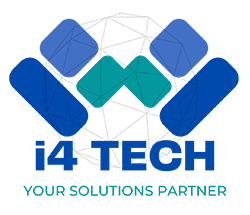The Growing Threat of Insider Attacks: Prevention and Detection
In today’s digital landscape, the most dangerous threats to cybersecurity don’t always come from outside the organization — sometimes, they’re already inside. Insider attacks are a growing concern, especially for businesses that handle sensitive data or operate in highly regulated industries. As cyber defense mechanisms evolve to block external threats, malicious or negligent insiders have become a preferred attack vector.
What Is an Insider Attack?
An insider attack occurs when an individual within an organization — such as an employee, contractor, or partner — intentionally or unintentionally compromises data or system security. These individuals often have authorized access to critical systems and data, making it easier for them to cause harm or leak information.
Insider threats can be categorized into:
- Malicious insiders: Individuals who intentionally steal, delete, or corrupt data for personal or financial gain.
- Negligent insiders: Employees who unknowingly cause security breaches by mishandling data or ignoring security protocols.
- Compromised insiders: Users whose accounts have been hijacked by external attackers.
Why Insider Attacks Are Rising
- Increased remote work: Distributed teams mean less oversight and more opportunities for unsupervised access.
- Wider access privileges: Many employees are granted more system access than necessary.
- Lack of cybersecurity training: Employees may not be aware of how their actions can open the door to threats.
- Poor identity and access management: Weak password policies and shared credentials make insider attacks easier.
Common Indicators of Insider Threats
- Unusual login times or locations
- Large data transfers to personal devices
- Unauthorized software installation
- Accessing data unrelated to one’s job
- Attempts to bypass security controls
Prevention Strategies
- Implement the Principle of Least Privilege (PoLP):
Only provide users with the minimum access necessary to perform their job roles. - Employee Training & Awareness:
Regular training on cybersecurity best practices helps reduce negligent insider threats. - User Activity Monitoring:
Use monitoring tools to detect unusual behavior, access patterns, or file movements. - Strong Offboarding Processes:
Immediately revoke access for employees who leave or change roles. - Multi-Factor Authentication (MFA):
Adds an extra layer of security even if login credentials are compromised. - Data Loss Prevention (DLP) Tools:
These tools help detect and block unauthorized data transfers.
Detection Techniques
- Security Information and Event Management (SIEM):
Aggregate and analyze logs for suspicious activity. - User and Entity Behavior Analytics (UEBA):
Leverages AI to detect deviations from normal user behavior. - Audits and Regular Reviews:
Periodically review who has access to what and why.
How i4 Tech Integrated Services Can Help
At i4 Tech Integrated Services, we support businesses in implementing strong cybersecurity frameworks, including tools for insider threat detection, staff training, and access management solutions. Whether you’re a small business or a growing enterprise, we help you secure your internal environment against evolving threats.


